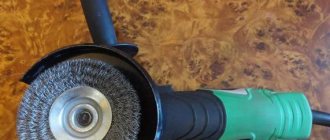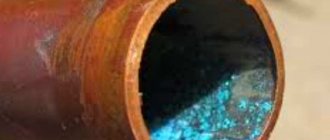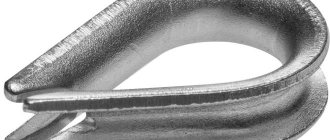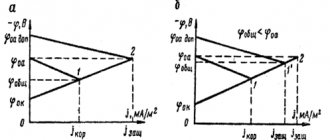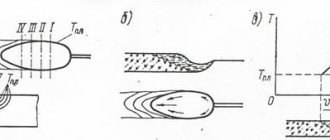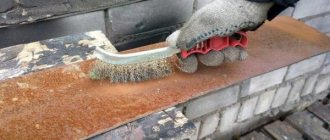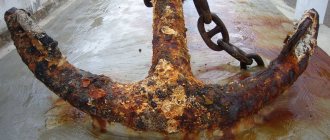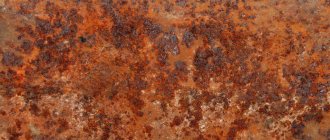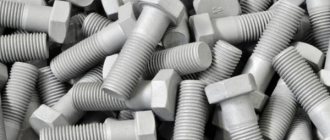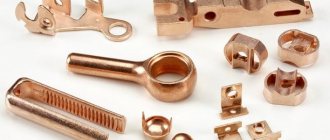Chemical phosphating of carbon steels, cast iron, non-ferrous metals. The thickness of the phosphate film is from 7 microns. up to 50 microns. Treating surfaces coated with a phosphate film with lubricants or varnish.
It is possible to coat parts up to 1000 mm long and weighing up to 100 kg. To place an order for phosphating, you must send us product drawings and quantities. The cost of processing is calculated based on the surface area of the parts being processed, as well as the thickness of the coating.
- Processed materials: steel of any grade (except high-alloy), cast iron, non-ferrous metals.
- Overall dimensions of products (LxWxH): 1000mm.x500mm.x500mm.
- Requirements for the metal surface: clean without traces of rust and scale.
- The price of chemical phosphating is calculated individually.
- We suggest that you familiarize yourself with a brief theoretical material on the topic of chemical phosphating.
Theory of chemical phosphating
Chemical phosphating is one of the most reliable and cheapest ways to protect metal products from corrosion. Products made of carbon steel or non-ferrous metals (aluminium, zinc, magnesium) can be subjected to this processing method; products made of high-carbon steel and cast iron are more often phosphated. High-alloy steels, for example, chrome vanadium or chrome tungsten steels are not recommended for this type of processing, since the phosphate film formed on their surface is of low quality. The process of chemical phosphating is the treatment of metal products in a special solution containing manganese, iron and phosphoric acid. As a result, a film is formed on the surface, consisting of phosphate salts of iron and manganese, which is dark gray in color and has a porous microcrystalline structure.
Briefly about the essence of phosphating
The treatment process is based on the use of phosphoric acid (H3PO4). Immediately after contact of the metal with the acid, dihydrogen phosphates Me(H2PO4)2 are released. Further interaction of the metal and the acid leads to a decrease in its concentration with the formation of two types of salts:
- disubstituted MeHPO4 (monohydrogen phosphates);
- trisubstituted Me3(PO4)2 (phosphates).
Thanks to the properties of three types of phosphoric acid salts, a sparingly soluble coating of phosphates is formed, protecting the metal surface from corrosion. The procedure is accompanied by the precipitation of phosphates followed by dissolution of the base metal.
Characteristics of Phosphate Film
The phosphate film formed on the metal during the process has high adhesion strength to the base metal and is resistant to aggressive environments - gases, combustibles and lubricants, organic oils, benzene, etc. The corrosion resistance of the phosphate film is lower in highly aggressive environments, for example, in solutions of acids and alkalis, sea water, ammonia. The film thickness can reach 50 microns and depends on the phosphating mode, the grade of material and the method of preparing the surface of the material. The structure of the phosphate film is porous, and therefore it absorbs and retains lubricants, varnishes or dyes, which can greatly increase its corrosion-protective properties. The phosphate film has high ductility, and does not peel off at the bend and retains its protective properties. Another important characteristic of a phosphate film is its high breakdown resistance - even without impregnation with additional insulating compounds, the breakdown voltage of a phosphate coating can reach 1000 volts. Phosphate film retains its properties up to 5500C. The values of film hardness and wear resistance are low - the mechanical properties of steel do not change after phosphating. When phosphating, it must be taken into account that the shade of the phosphate film can be different on the same product, depending on the type of mechanical or thermal treatment of different areas of the product.
Why is metal phosphating necessary?
During operation, metal products wear out and suffer from the destructive effects of atmospheric factors and corrosion. The usual opening of the surface with paints and varnishes does not completely eliminate the problem of destruction of mechanisms over time. To increase the wear resistance of metal products, they are subjected to phosphating. The procedure promotes the appearance of a thin protective layer on the metal surface, which will provide the metal with long-term protection from oxidation with the formation of rust.
The technology for creating a protective film was first used in 1869 by immersing hot steel in a solution of phosphoric acid. The first procedure for phosphating iron and steel without heating the material was carried out in 1906.
Features of phosphate coatings
Phosphating in industrial enterprises is carried out using two methods - spraying a protective composition or immersing a metal product in it. To prepare the film substance, water-insoluble phosphate salts are used - manganese plus iron or zinc with iron. The resulting composition, which interacts with metal, has a number of useful characteristics.
| Options | Features at a Glance |
| Coating thickness | Usually it is in the range of 2-50 microns, but the specific value is determined by the conditions of base preparation and layer application mode. The layer consists of two parts - a medium tightly bound to the metal (porous or smooth) and an outer layer that characterizes the quality level of the phosphate film |
| Color index | The specific color of the surface after phosphating depends on the type and composition of the base material. The surfaces of non-ferrous metals and steels with low carbon content that have been treated with high acidity solutions will turn gray (light or dark shade). High-alloy steel, as well as cast iron, acquire a dark color after pickling; a greenish tint indicates the presence of chromium and nickel in the base metal |
| Structure | Treatment with manganese phosphate essences promotes the formation of a coarse-crystalline protective substance. The fine-crystalline coating (thickness 5-10 microns) formed after degreasing is characterized by high-quality protective properties with high adhesion |
It does not take much time to phosphate the metal before painting the product (about an hour), and the treated base must dry well before further manipulations. The protective film is not easy to see, but it can withstand high (up to +500°C) and low temperatures (up to -75°C), and voltages of up to 500 V. Additional impregnation with varnishes (oil, bakelite) increases the level of breakdown voltage of the phosphate layer.
Benefits of technology
After treatment with phosphate salt, the metal surface of the product is covered with a high-strength film of low electrical conductivity, which prevents the formation of corrosion foci. A significant increase in adhesive properties after processing the base allows the technology to be widely used to prepare metal structures for painting, which protects mechanisms not only from wear. Phosphating helps:
- improve the sliding process of contacting elements;
- facilitate cold stamping of steel;
- protect magnets from corrosion;
- increase the resistance of steel to oxidation at high temperatures;
- ensure retention of oil-soap structures on the surface of metals.
The phosphating procedure can be applied to almost all types of alloys - low-alloy and carbon steels, copper alloys, aluminum, cast iron and zinc parts. The quality of the phosphate film covering high alloy steel will be poor.
Surface preparation for phosphating
There are no special requirements for the surface of products before applying a phosphate coating. Moreover, the characteristics of the coating are directly dependent on the preparation method. On parts, after finishing mechanical processing, sandblasting, dry tumbling, a fine-crystalline film with a thickness of 6-10 microns is formed. If parts have been etched, a loose, porous film with a thickness of 40-50 microns is formed, the structure of the future coating can be compacted by pre-treating the surface with a solution of soda ash, after which the parts are washed with running water. Otherwise, the preparation of the surface of parts for chemical phosphating does not differ from the preparation for the application of galvanic coatings.
Chemical phosphating process
The classic process is phosphating, in which no additives are introduced into the solution - only the drug “mazhef” is used, which contains iron, manganese and phosphoric acid. The concentration of the drug is in the range of 27-32 g/l. A feature of the process is that when the majef preparation is dissolved, an insoluble precipitate is formed, which is not removed from the phosphating bath, since it is involved in the formation of the coating. Preparation for the process is as follows - the solution prepared directly in the working bath is brought to a boil, then the heating is turned off and the sediment is allowed to settle, then the parts are loaded into the bath. The temperature of the solution must be constantly maintained within the range of 96-980C, without bringing the solution to a boil, since when the solution boils, sediment may fall on the surface of the parts being processed, which will worsen the appearance and quality of the phosphate film. During the chemical reaction, hydrogen is released. The time of the phosphating process is taken taking into account the 10-minute exposure of the products in the bath, after the release of hydrogen ceases. To obtain films, the main purpose of which is to protect against corrosion, the phosphating process takes 1-2 hours, depending on the grade of steel. To obtain the films necessary for electrical insulation, the products are removed from the phosphating bath even before the release of hydrogen stops - 30-40 minutes after the start of the process. After removing the products from the solution, they are washed and dried.
The solution is adjusted as necessary, usually when processing parts with a large surface area. After analysis, the required amount of dry components is added to the solution. As the phosphating bath is used, the amount of insoluble precipitate increases; upon reaching an amount that makes normal operation of the bath difficult, the solution is drained and filtered. Removal of low-quality phosphate film occurs in a 10-15% solution of sulfuric acid.
This method of chemical phosphating allows us to obtain high-quality coatings, in contrast to methods that use special additives.
Phosphating using special additives
In order to reduce the phosphating time and reduce the temperature of the process, special additives are introduced into the majef composition. The composition of the additives may be different; in some cases, phosphate salts of sodium, zinc or manganese are added to the solution. Nitric acid salts are used as an oxidizing agent. The feasibility of using special additives is usually a compromise between the economic component and the required quality of the phosphate layer. Typically, additives are used to produce thin coatings that are used as a primer for applying varnish and paint. In this case, use a solution of the following composition:
- "mazhef" - 20-30 g/l;
- zinc nitrate – 35-40 g/l;
- sodium fluoride – 5-10 g/l.
This solution is also used for applying phosphate film without heating to large items, without immersion. The solution is mixed with talc and applied to the surface of the product with a brush or roller. To obtain a high-quality coating, the solution is applied in three layers, with intermediate drying of each layer.
Another example of the use of special additives in phosphating is the process of blasting large-sized parts using special multi-chamber automated equipment. The parts are treated with a solution under a pressure of 1.4 atm. through the nozzles. The resulting thin phosphate film, in order to achieve acceptable anti-corrosion properties, requires varnishing or impregnation with a lubricant.
The most widely used solution is one that can significantly reduce the cost of chemical phosphating of metal without significant loss of coating quality:
- orthophosphoric acid – 80-85 g/l;
- zinc oxide – 18-21 g/l;
- sodium nitrite – 1-2 g/l.
The exposure of products in this solution is 15-20 minutes. Adjusting the solution to maintain the pH within 2.7-3.3 involves periodically adding a small amount of sodium nitrite. After phosphating, the parts are passivated in a hot solution of potassium dioxide and dried.
Phosphating at home
The phosphating process can be carried out independently. The easiest way to do this is in a quick way. To do this, you will need to make a solution based on MAZHEF salt and zinc nitrate. After mixing the components and heating the liquid to boiling temperature, the metal product is placed in a container with the mixture for 15 minutes.
Note! The phosphated surface can be painted only after it has completely dried.
Although phosphating can be carried out outside of production conditions, certain knowledge and qualifications are still required to carry out the work. Therefore, if you are not confident in your abilities, it is better to entrust this process to specialists who will provide such a service quickly and efficiently.
Phosphating of aluminum, magnesium and alloys based on them
Aluminum phosphating is used to create a primer layer on an aluminum part for painting. After etching and brightening in nitric acid, aluminum parts are placed in a solution of the following composition:
- Orthophosphoric acid – 10-15 g/l;
- zinc nitrate – 18-22 g/l;
- zinc hydrofluoride – 10-15 g/l.
Phosphating takes place at a temperature of 75-850C for 0.5-4 minutes. Upon completion of the process, the parts are washed, dried, passivated in a 3-5% solution of chromic acid, then washed and dried again. As a result, a light gray film is formed on the metal, consisting of phosphate compounds of zinc and aluminum, having a fine-crystalline structure. In addition to creating a primer layer, this method of surface treatment is used to facilitate the process of cold drawing or deep stamping of aluminum sheet. Other non-ferrous metals are processed in a similar way.
You may be interested in the following articles:
|
Features of white screws
There are different types on sale:
- light gray;
- silvery
Neither option looks completely white. This is rather a conditional name. Thanks to him, it becomes possible to distinguish products from each other. Features of gray self-tapping screws:
- made of stainless steel, due to which the gray color appears;
- are resistant to corrosion, which is due to the chromium content - at least 10.5%;
- ability to withstand significant loads;
- long service life.
Stainless steel self-tapping screws
Stainless steel self-tapping screws can serve for decades without losing quality. It is recommended to install structures using such fasteners indoors, provided that the air humidity does not exceed 65%. But these are the recommended operating conditions. Thanks to their anti-corrosion properties, the products do not rust even when the value of this parameter fluctuates. Gray fasteners are not attractive. For this reason, it is most often hidden under a layer of finishing material.
Self-tapping screws, rated
Another type of self-tapping screws is made of carbon steel. Due to the composition of the material, fasteners of this type are susceptible to moisture. To eliminate this drawback, a protective coating is used. The result is products that are resistant to liquids. These are zinc-coated self-tapping screws. They can be used under any conditions: outside, indoors. However, it is still not recommended to perform installation using fasteners of this type in open, unprotected areas. During prolonged use under the influence of negative external factors, products may lose their properties over time if the protective coating is damaged.
INTERESTING: Ecowool: composition, pros and cons, installation and cost of insulation
